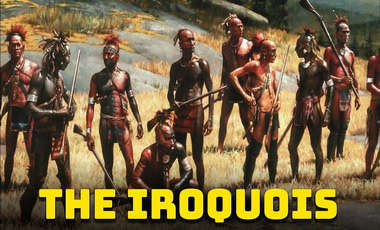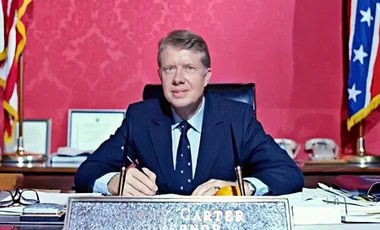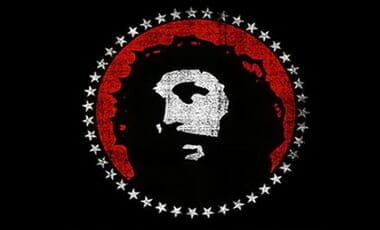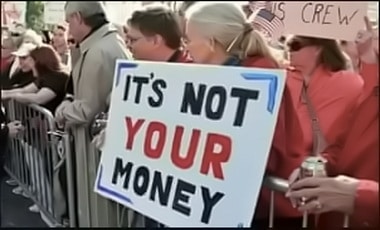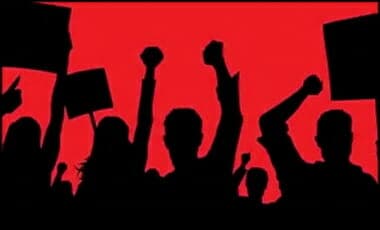“If anyone in seventeenth-century America can be considered genocidal,
it should be the Iroquois, rather than the French or English.”
~ Jeff Fynn-Paul ~
The Brutality of Ancient American Tribe – The Iroquois and what tactics did they employ? This video explores the historical Iroquois Confederacy, also known as the Haudenosaunee, and their formidable strategies in warfare and diplomacy. Join us as we delve into the brutal and sophisticated methods used by the Mohawk, Oneida, Onondaga, Cayuga, and Seneca tribes, along with the later addition of the Tuscarora.
Thomas Sowell discusses the Iroquois Confederacy.
I did some reading on vacation and wanted to excerpt a very small portion of what I read:
In North America, the history of Indian tribes shows a similar pattern of warfare with little evident “moderation.” On the contrary, victorious tribes often found it expedient to exterminate enemy tribes altogether, so as to avoid the problem of retributive attacks. Women and children of defeated tribes were carted off and enslaved to ensure no continuation of enemy bloodlines and traditions.
Iroquois history begins with the tale of Hiawatha, a semi-mythical leader who was remarkable insofar as he was a peacemaker—the implication being that most other tribal leaders were not. The archaeology of the period before Hiawatha has revealed many warrior skeletons riddled with arrows and/or hacked into pieces, indicating that violent warfare was normative in these regions before contact with Europeans.
The seventeenth century, the first for which we have written records, shows the Iroquois Confederacy maintaining an uneasy truce among its own membership, but only insofar as this enabled them to intensify warfare against their traditional enemies the Huron and the Algonquin. These so-called Beaver Wars lasted for many decades; they witnessed the destruction of the Wendat people, the Neutral Indians, the fabled Mohicans, and many other tribes.
Faced with the threat of what the modern Left should acknowledge as genocidal warfare, many of the Iroquois’ enemies were forced to flee to French, Dutch, and English settlements for protection, where their descendants eventually took up farming, converted to Christianity, or otherwise assimilated into the dominant culture. They gave up their vaunted “traditional” lifestyle because they preferred a peaceful life as a farmer to the omnipresent threat of death by tomahawk. Later in the eighteenth century, a few thousand Iroquois were to visit similar grisly fates on dozens of other neighbors, until only a handful of Native Americans remained in the entire territory circling the Great Lakes.
[….]
The same process occurred farther west in the Great Lakes region, where the Five Nations territory proved to be continuously in flux. The Five Nations group is thought to have been formed only a generation or two before French explorers contacted them, and the early years of French settlement in the region witnessed a number of horrific (dare I say “genocidal”) encounters. In 1649, the Iroquois took advantage of the weakened position of the Huron people to practically wipe them off the North American map.
“About twelve hundred Iroquois came,” a Huron remembered. “They took their anger out on the Fathers: they stripped them naked; they tore their fingernails off. They rained blows on their shoulders with sticks, on their kidneys and stomach and legs and face, and no part of their body was spared this torment.”
In the process of the Beaver Wars, the Iroquois “stole” land from the Hurons and other tribes equal in size to their original territory in New York State. Later on, the Iroquois continued their imperialist campaigns, ranging far to the south and west of their original territories. They destroyed the Erie Indians and the famed Mohicans, and conquered several other tribes. In the years around 1700, they ousted the Sioux Indians from West Virginia and Kentucky, who were forced by Iroquois aggression to vacate the land forever and to settle farther west on more marginal ground. The Iroquois thereafter claimed the Sioux hunting grounds for their own.
By 1780, the Iroquois Nation had stolen the equivalent of at least six times their original territory, all from neighboring tribes. From their original base in New York State, they had emptied much of Pennsylvania, West Virginia, Ohio, Indiana, and much of southern Ontario of its former inhabitants. Whether or not one ascribes the Iroquois success to the presence of European firearms, the fact is the Iroquois, when given enough power, proved more than willing to permanently extinguish every Indian tribe they could get their hands on—this despite the efforts of the French and English to protect many of the Iroquois’ victims.
If anyone in seventeenth-century America can be considered genocidal, it should be the Iroquois, rather than the French or English. It is believed that the intra-Indian wars of attrition, which resulted in the expulsion of many tribes from the Great Lakes region, so fatally weakened Native populations in the area, that they had little choice but to abandon most of this land to American settler expansion in subsequent decades.
Farther west, groups such as the Apache are famous for displacing and dispossessing dozens of tribes from their ancestral lands within living memory of the whites’ arrival. The Apache are thought by archaeologists to have originated in Alaska and then rampaged southwards. Conquering and intimidating as they went, like a group of New World Huns or Vandals, the Apache finally reached the region of Texas by the time the first Spanish arrived in the early sixteenth century. From the Spanish, the Apaches received horses and guns, which enticed them to give up their semi-agricultural lifestyles and start hunting buffalo full. The irony is that many of these Indians only began hunting riding horses and buffalo because contact with Europeans enabled them to do so.
Meanwhile, shortly after 1700, a push by the Comanches displaced many Apache Indians, who in turn put pressure on the Pueblo Indians, raiding them and despoiling them of their own food supplies. The fierce Comanche went on to displace, assimilate, and/or annihilate dozens of other tribes and smaller groups in a series of well-documented attacks. Neighboring tribes feared them as a merciless scourge, and rightly so: like most other Native American tribes they routinely killed babies, tortured men, raped women, and enslaved children as they conquered.
Jeff Fynn-Paul, Not Stolen: The Truth About European Colonialism in the New World (Nashville, TN: Bombardier Books, 2023), 141-142, 186-188.
The following video is pretty good. He falters a bit in some history, but the presentation and humor are worth it:
Join me on a journey to uncover the untold story of “The Beaver Wars” in this captivating historical exploration. Together, we’ll delve deep into the tumultuous period of North American history, revealing the causes, consequences, and lasting impacts of this little-known conflict.
During the 17th century, rival indigenous nations clashed in a struggle for control over the lucrative fur trade, igniting what would become known as “The Beaver Wars.” We’ll unravel the socio-political dynamics at play, the strategic alliances formed, and the consequences across the region.
From the initial skirmishes to the full-scale warfare that engulfed the Great Lakes and Ohio Valley regions, we’ll explore the complex web of alliances, betrayals, and shifting power dynamics that characterized this pivotal era.
Together, we’ll shed light on this often overlooked chapter of history, exploring the cultural, economic, and environmental ramifications of “The Beaver Wars.” Gain insight into the legacy of this conflict and its enduring impact on North America.
Don’t miss out on this enlightening journey through history. I encourage you to like, comment, and subscribe to my channel for more fascinating insights into the past. Your support helps me continue to bring these stories to life.
BLACK HILLS
Activists suggest that all “colonized” land should be returned to the previous owners. Is it really that simple? Michael Knowles has thoughts.
Here is a quick blurb by Dinesh D’Souza discussing the American Indian battles over territory (land). Gruesome warfare, rape, pillaging, etc., were all part of these “land-grabs.”
